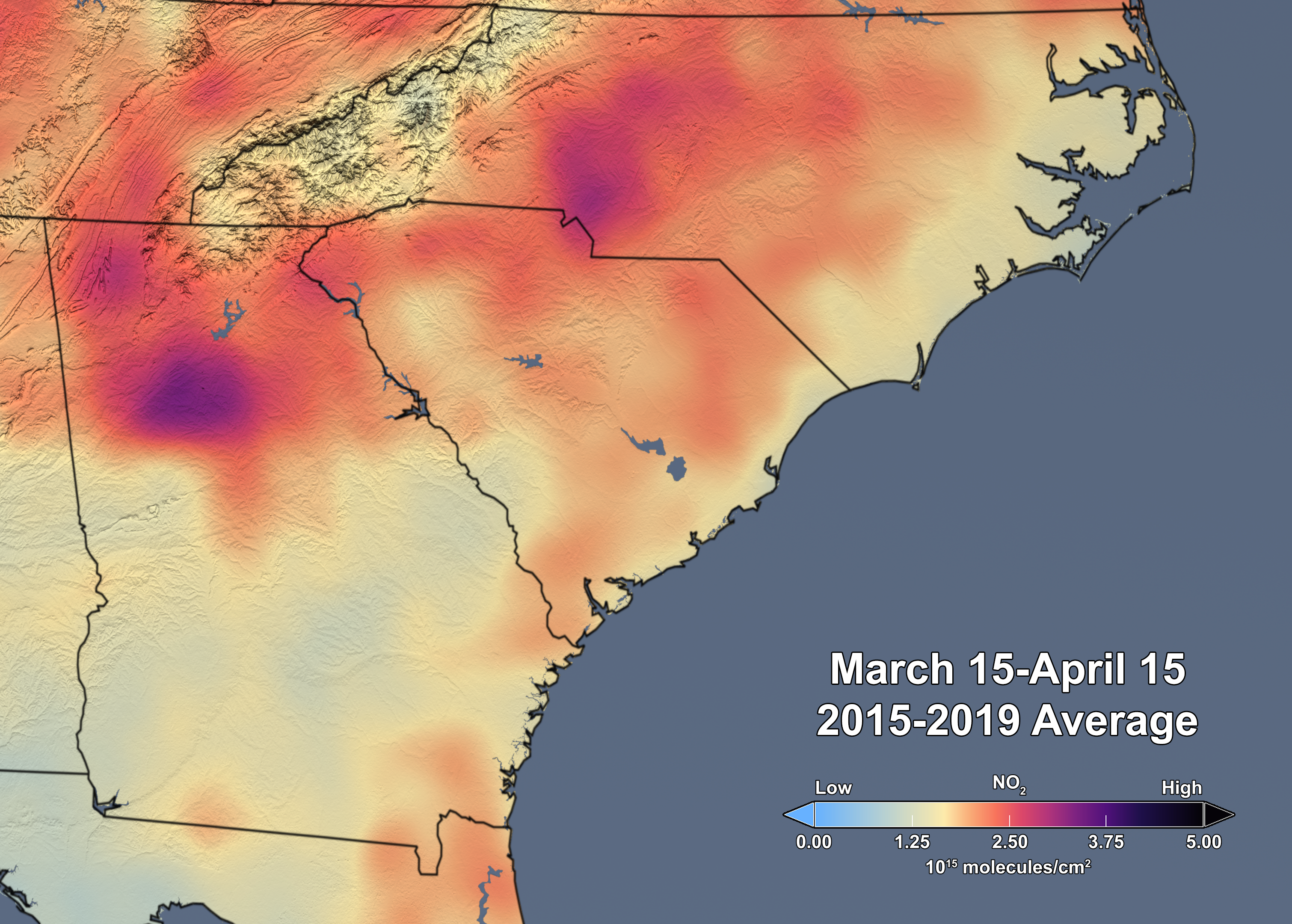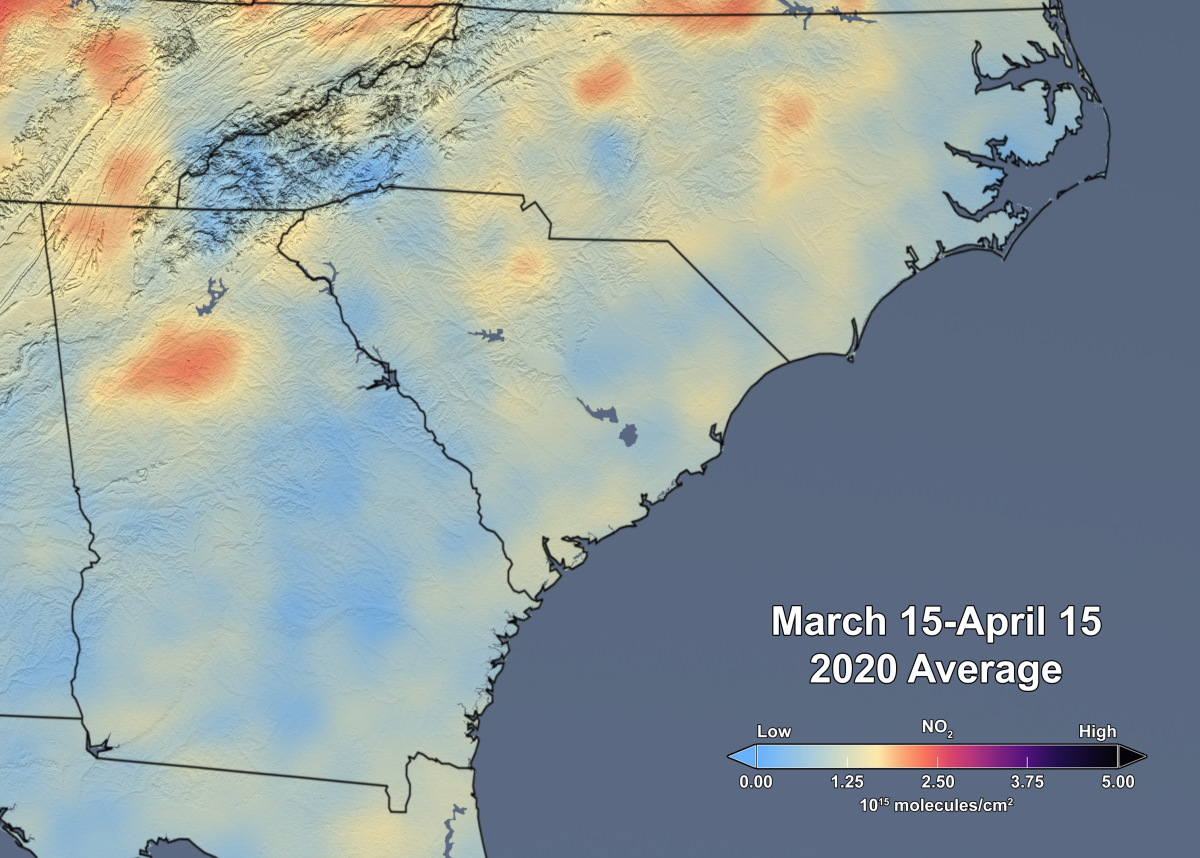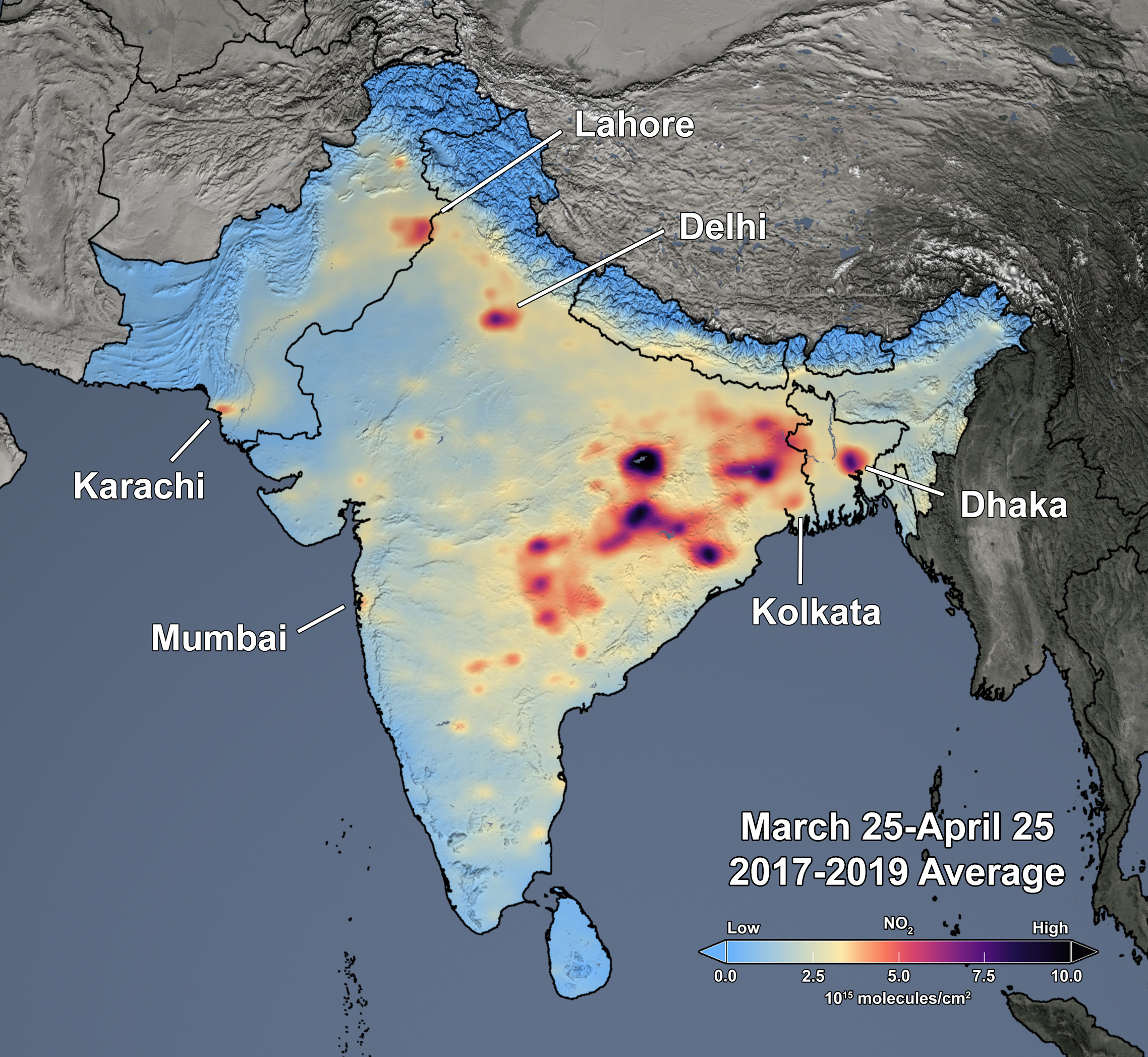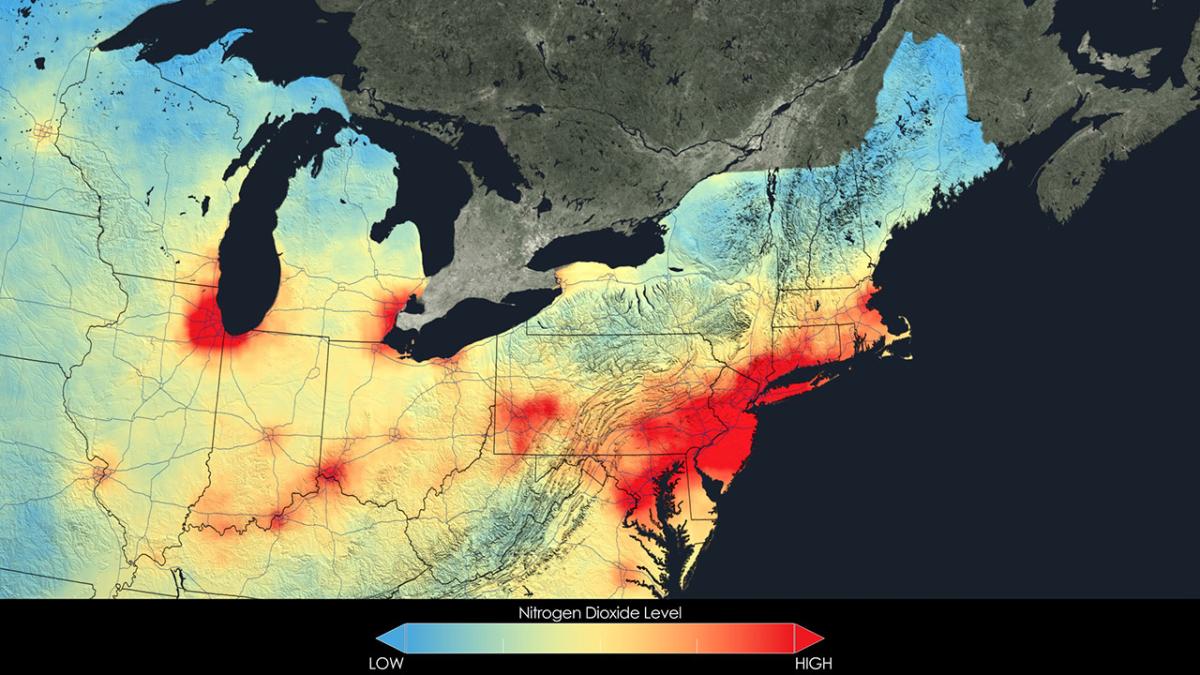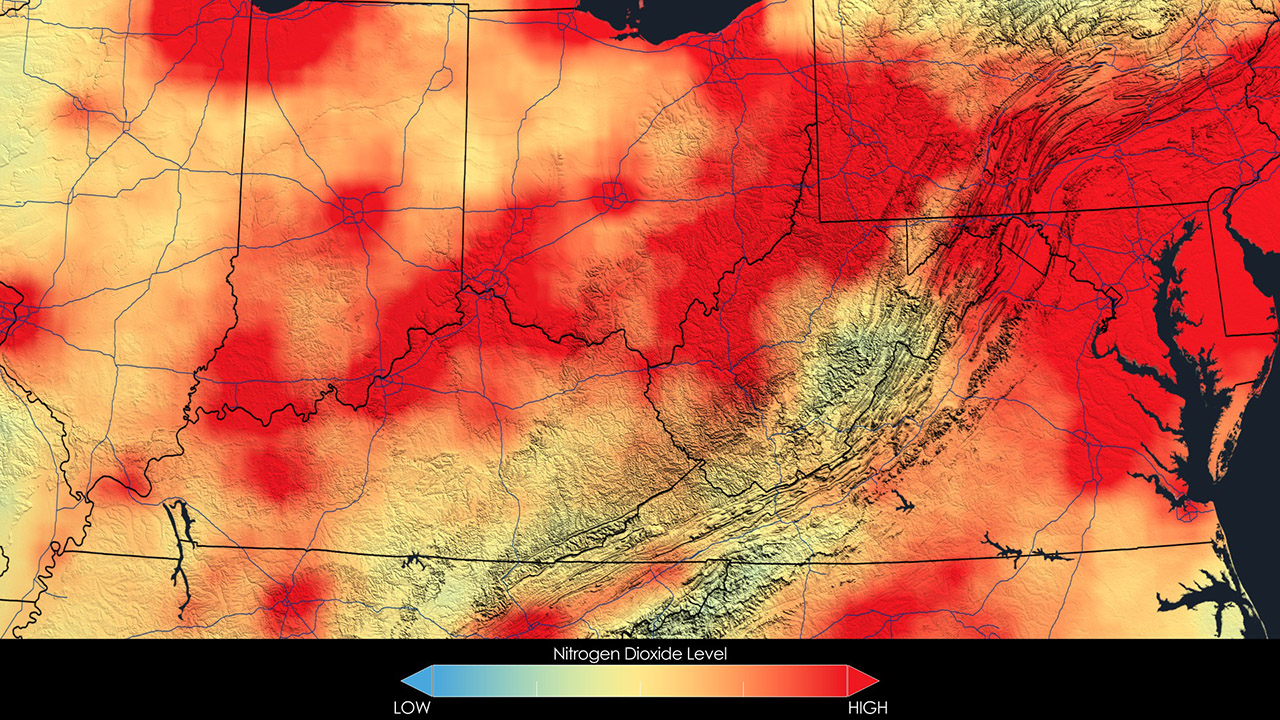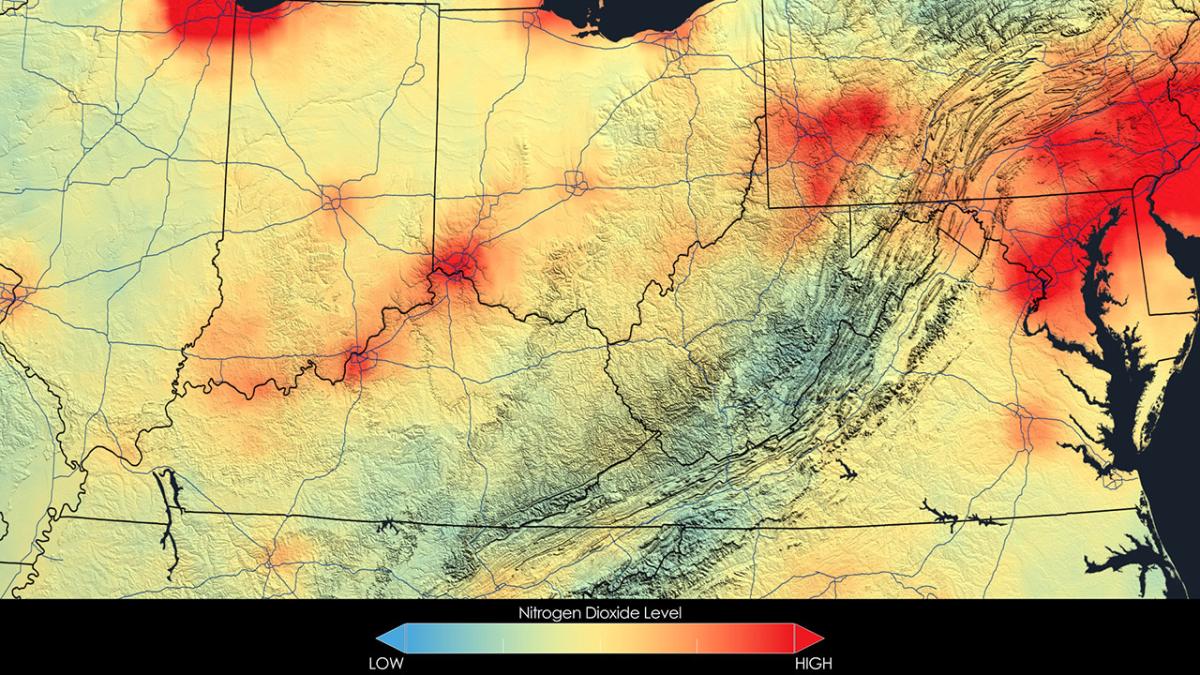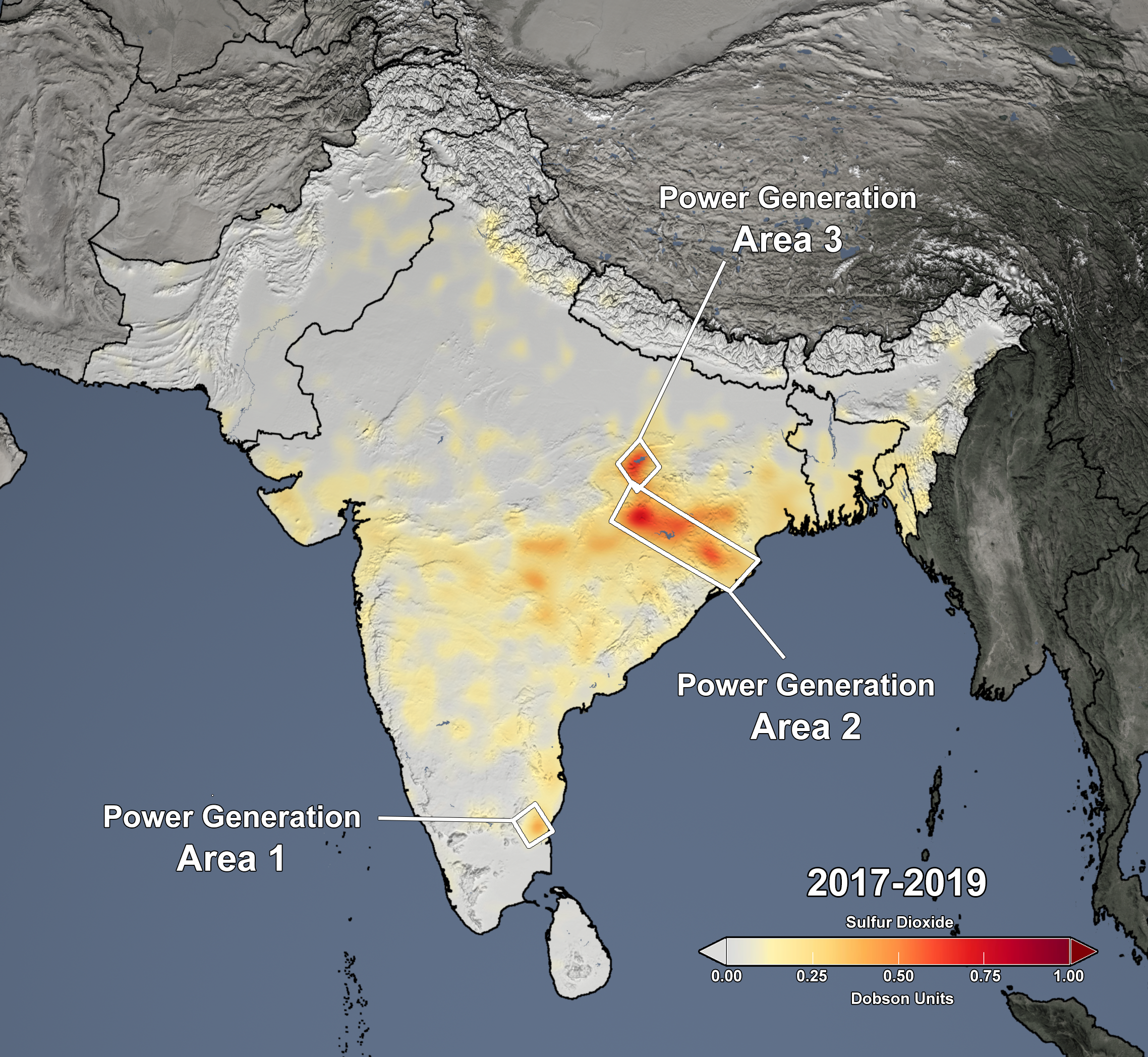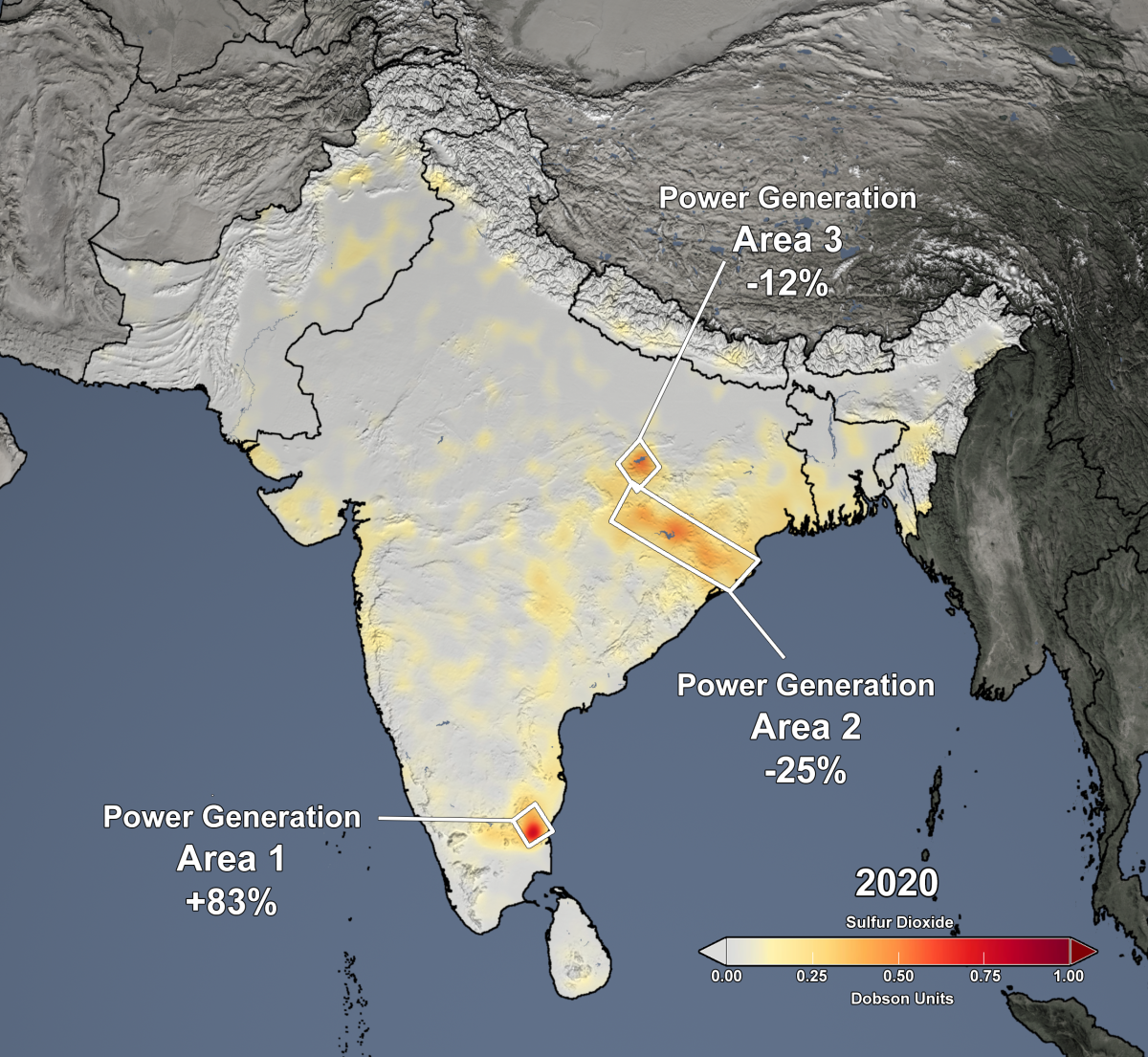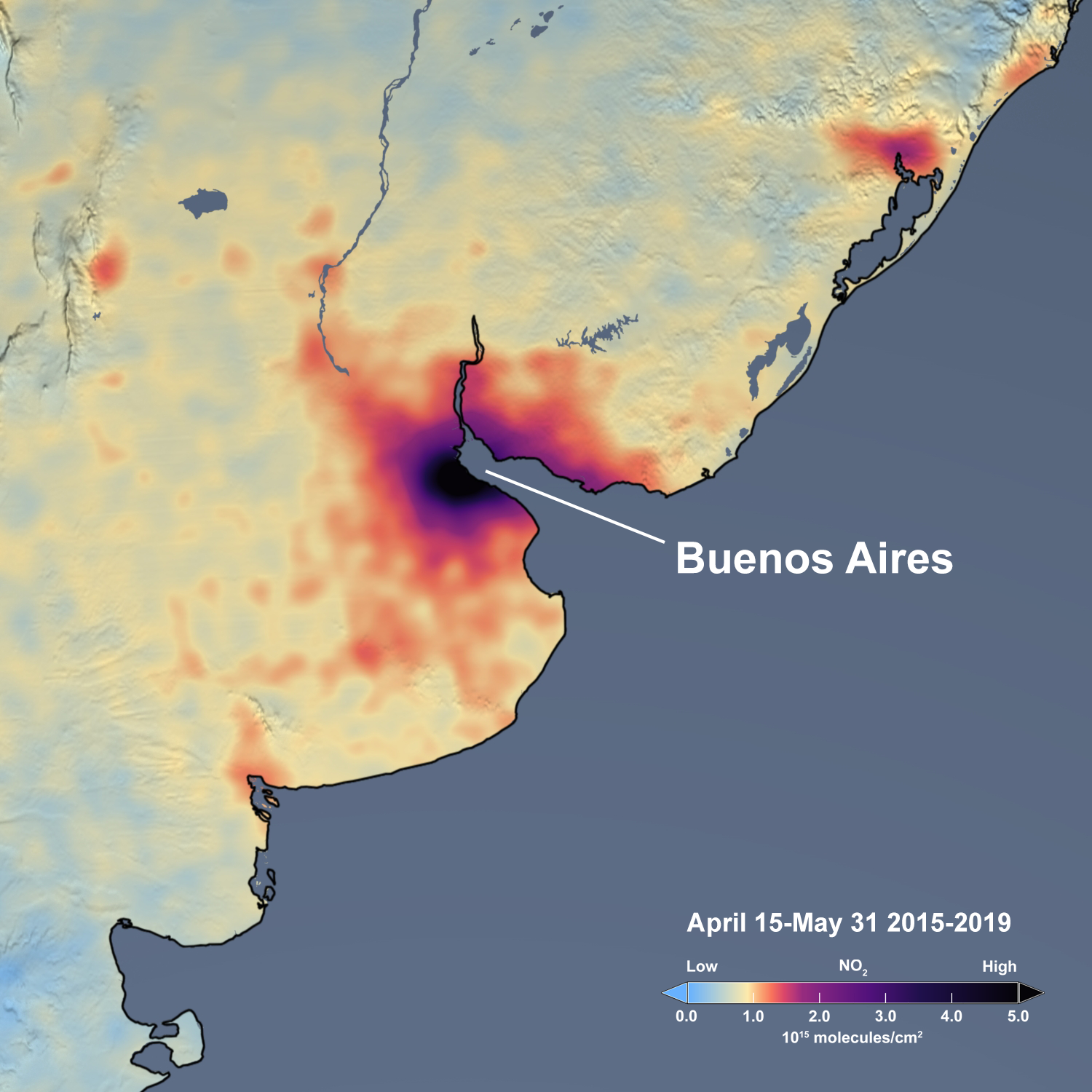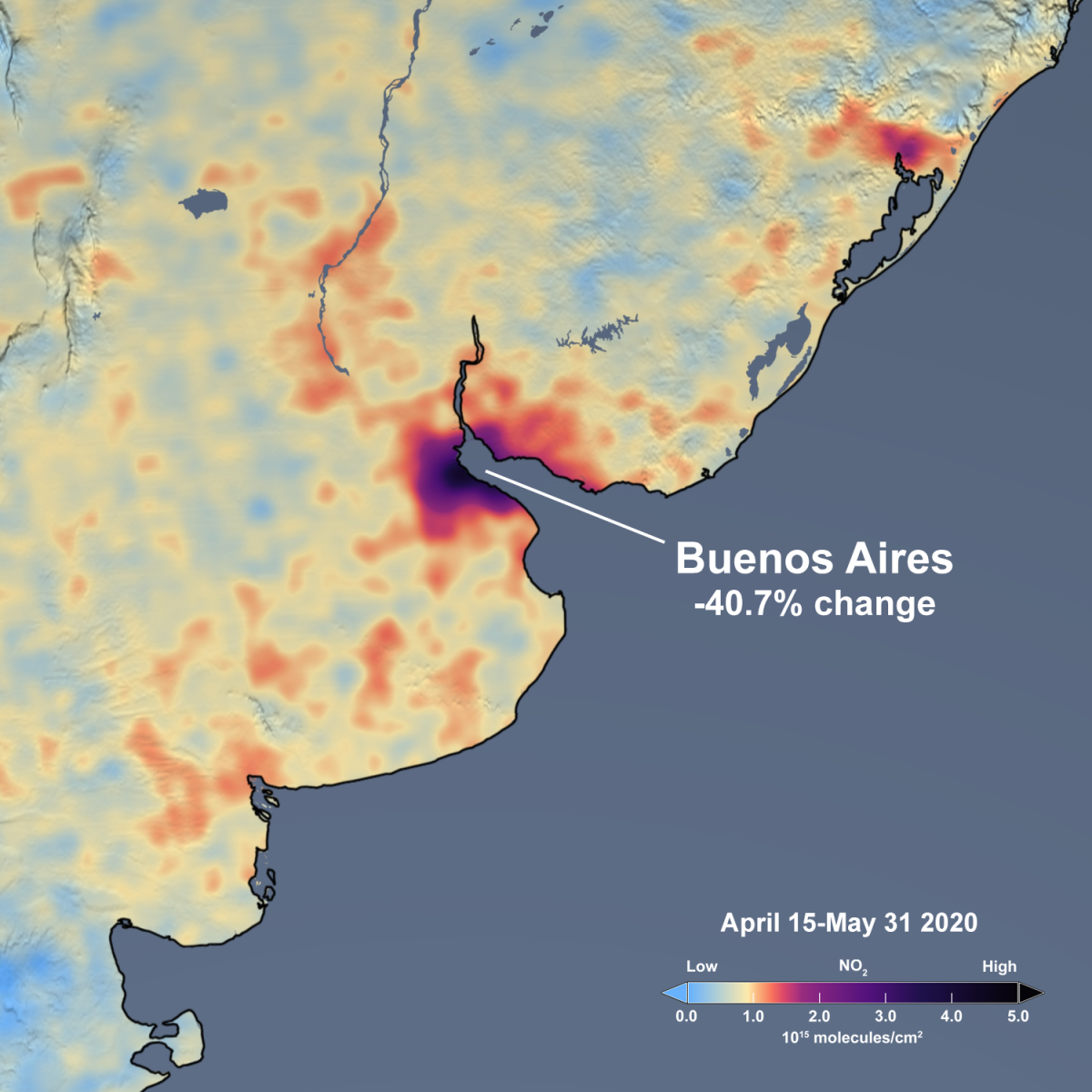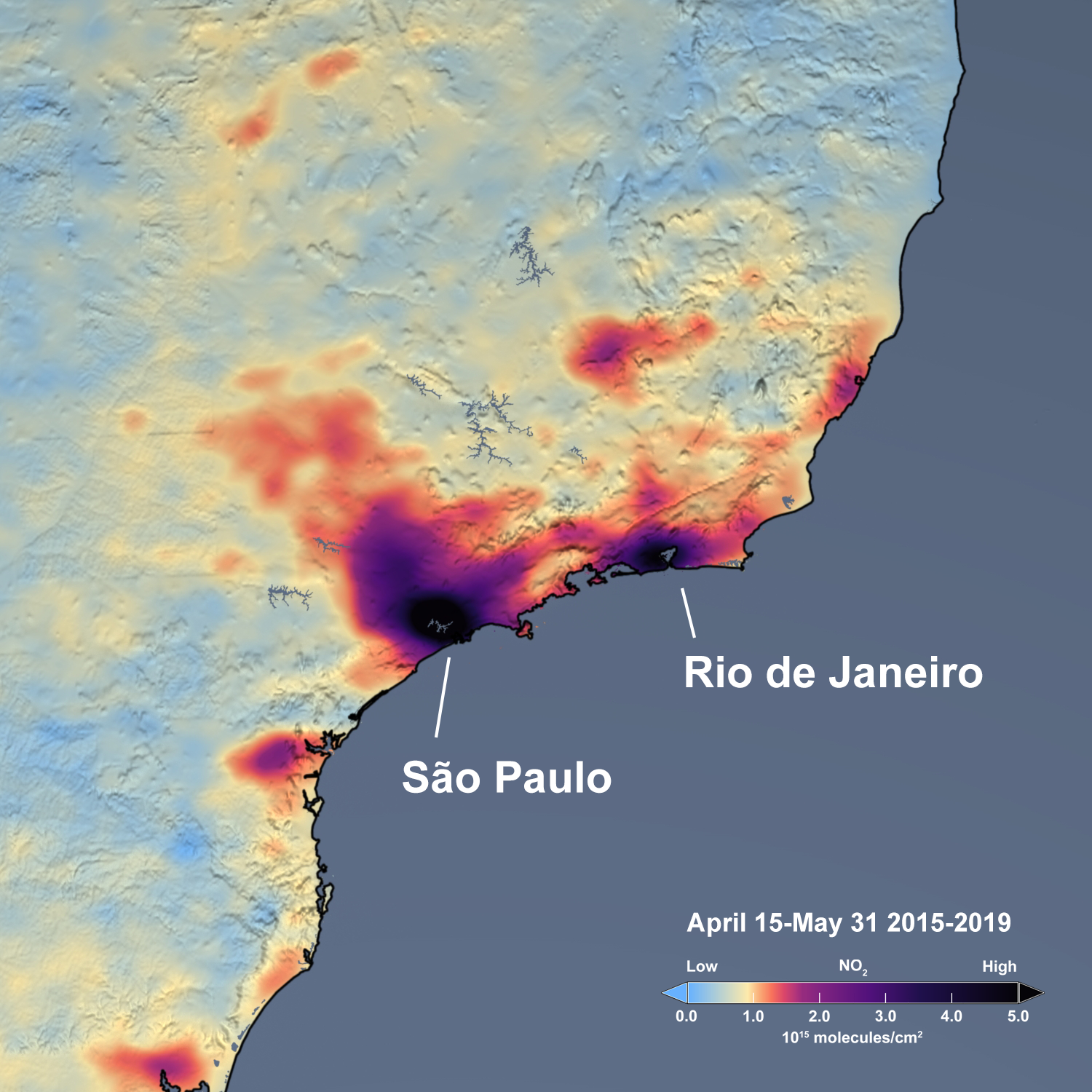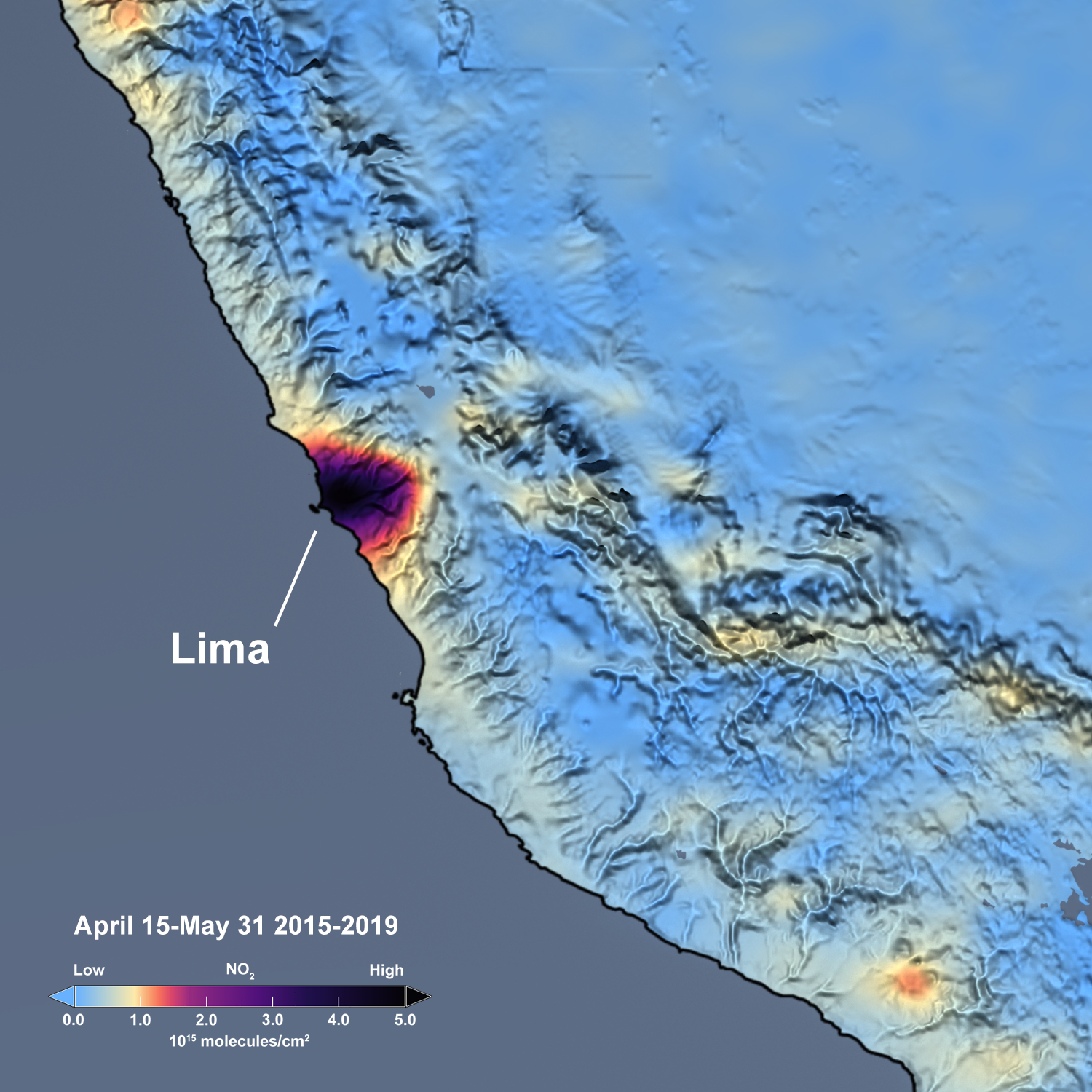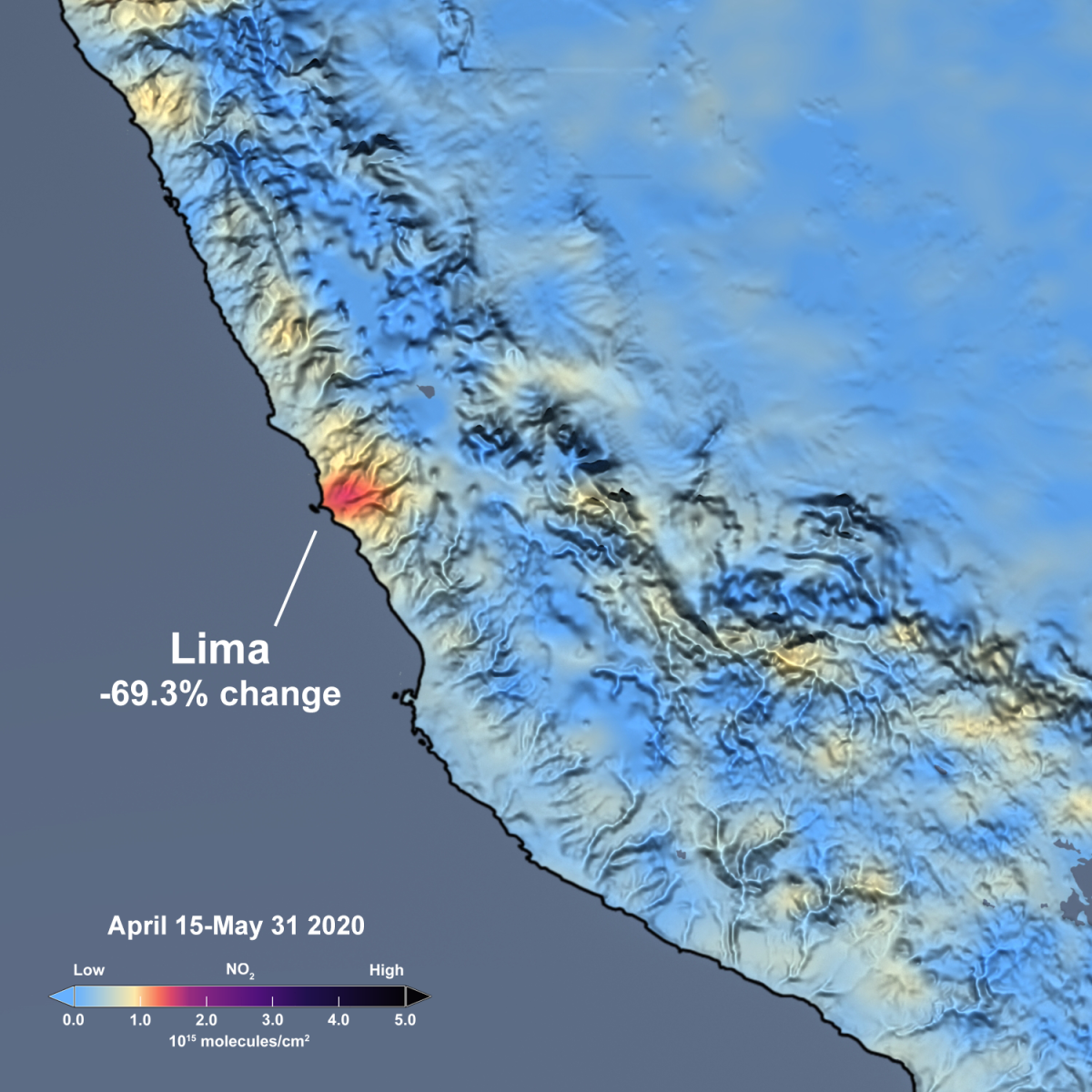Pandemic Before and After: Los Angeles 2015-2019 versus 2020

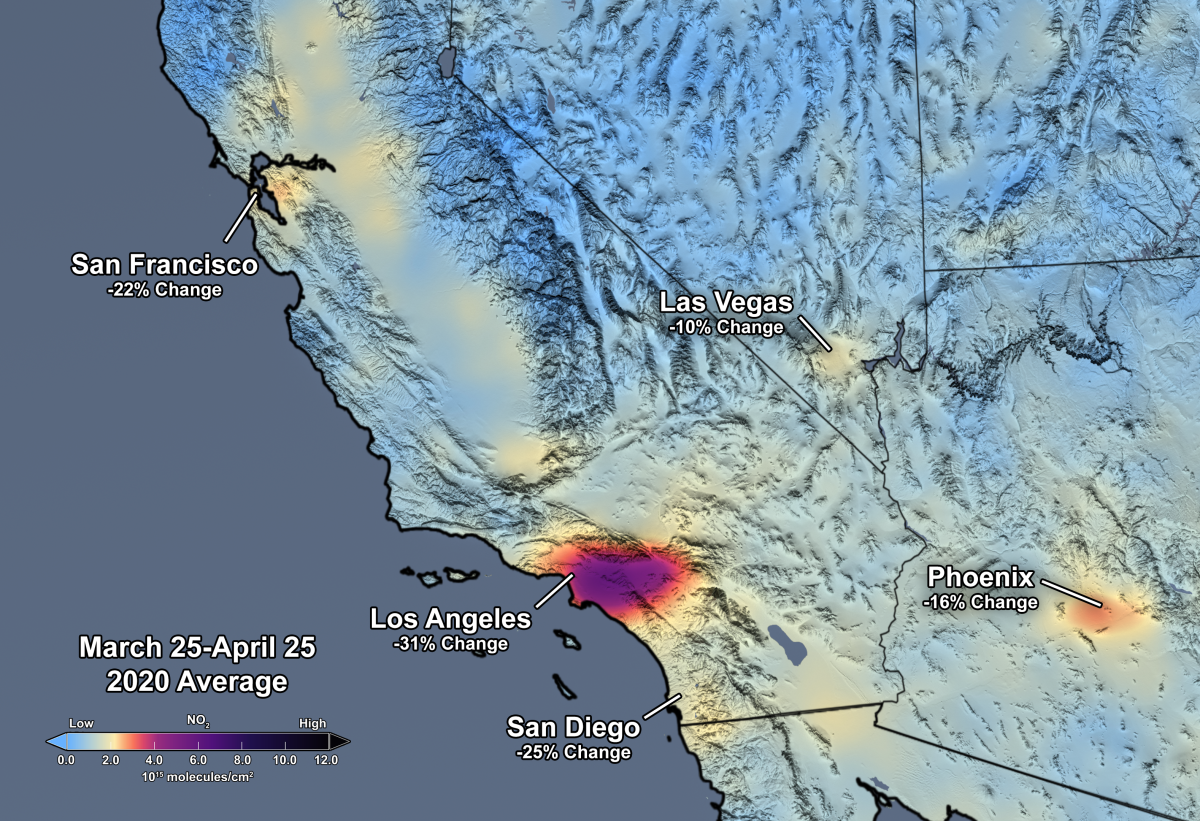
Figure caption: On March 19, California was one of the first states to set mandatory stay-at-home restrictions in an attempt to slow the spread of COVID-19. Arizona and Nevada followed suit around April 1. The Ozone Monitoring Instrument (OMI) on board NASA’s Aura satellite provide data that indicate that these restrictions have led to about a 31% decrease in NO2 levels in the Los Angeles basin relative to previous years. NO2, or nitrogen dioxide, is a trace gas measured by OMI. The estimated reductions for other cities in the Southwest U.S. before and after the quarantine restrictions are 22% for the San Francisco Bay Area, 25% for San Diego and Tijuana, Mexico, 16% for Phoenix, and 10% for Las Vegas. The slider above shows satellite estimates of OMI NO2 as an average of March 25 through April 25. The image on the left shows the mean of the 150-day period from 2015 through 2019, while the image on the right shows the mean of the 30-day period for 2020. The images are free and publicly-available and may be downloaded.


